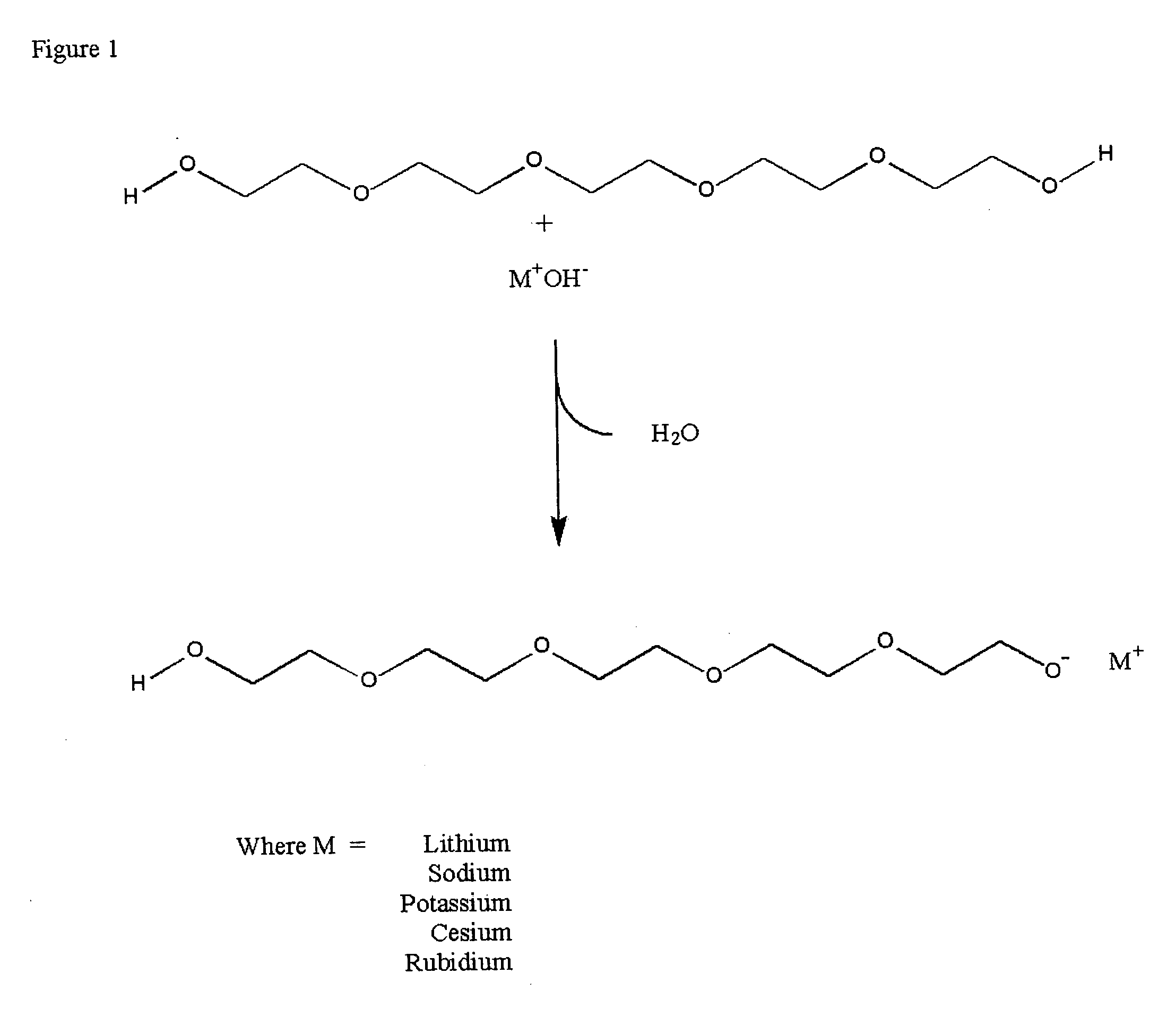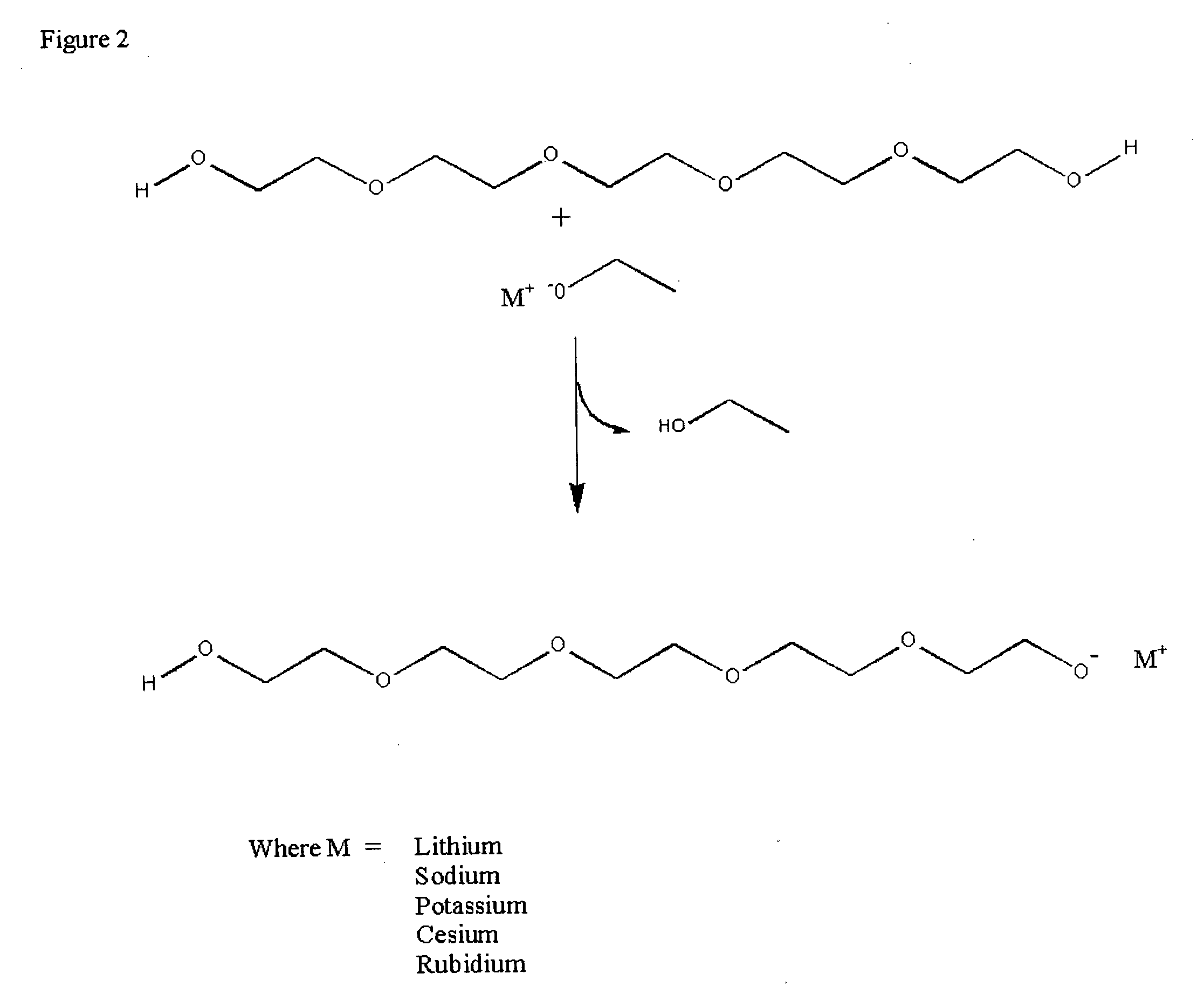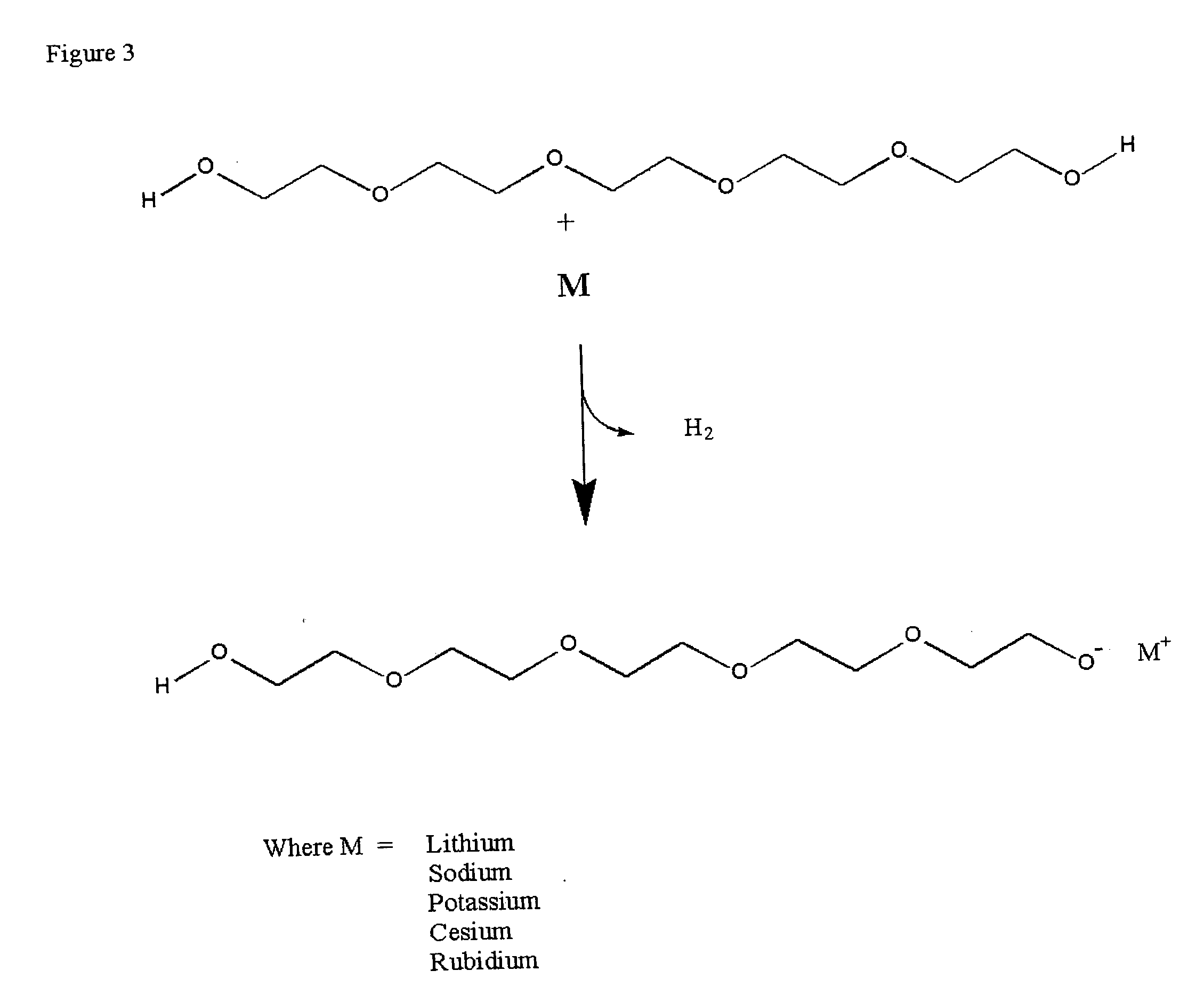Methods for preparation and use of strong base catalysts
a strong base catalyst and catalyst technology, applied in the direction of fatty acid production, carboxylic compound separation/purification, organic isomerisation, etc., can solve the problems of ineffective reaction efficiency, undesirable presence of cla products, and prone to inactivation
- Summary
- Abstract
- Description
- Claims
- Application Information
AI Technical Summary
Benefits of technology
Problems solved by technology
Method used
Image
Examples
example 1
Preparation of Strong Base Catalyst from Peg 300 and Metal Hydroxides
[0034] Hydroxides of lithium, sodium, potassium, rubidium (solution) and cesium (monohydrate) were placed in round bottom flasks and heated to 110° C. in a vacuum oven under vacuum (29″) for 1 hour. With the exception of the rubidium hydroxide in solution there was no appreciable weight change. The rubidium solution lost a small amount of water. The color of the hydroxides remained constant with the treatment. Similarly polyethylene glycol 300 MW was placed in a round bottomed flask at the same time under vacuum. The peg solution remained clear and colorless throughout the treatment. The flasks were then removed from the heat and vacuum sources and the weight of the flask recorded. There was no change in weight of the solution. The infrared spectrum of the PEG and the PEG alkylates were recorded on samples placed between KBr salt blocks both before and after the vacuum treatment. The NMR spectra of the PEG and the...
example 2
Preparation of Strong Base Catalyst from Peg 300 and Aqueous Solutions of Metal Hydroxides
[0038] Two grams of a solution of 45% potassium hydroxide in water or two grams of a solution of 50% sodium hydroxide in water were added to 13 grams of polyethylene glycol 300 in a pre-weighed round bottom flask containing a Teflon coated stirring bar. The flask was equipped with a vacuum adaptor and heated to 130° C. under vacuum (0.01 mm Hg) with stirring until all bubbling ceased. The flask was then removed from the heat and vacuum sources and the weight of the flask recorded. The FT-IR spectra of the basic solutions were recorded by placing the samples between KBr windows.
[0039] Weight loss was recorded for PEG and each base separately and the weight loss of the reactants together was also determined. Weight loss of greater than the sum of the loss of the two separate ingredients was assumed to be due to formation of the strong base PEG alkylate catalyst with the concomitant loss of wate...
example 3
Strong Base Catalyst is not Produced by Reaction of Peg 300 and Potassium Carbonate
[0040] Either 0.95 g of sodium carbonate or 1.41 g of potassium carbonate were added to 13 grams of polyethylene glycol 300 in a pre-weighed round bottom flask containing Teflon coated stirring bar. The flask was equipped with a vacuum adaptor and heated to 130° C. under vacuum (0.01 mm Hg) until all bubbling ceased. The flask was then removed from the heat and vacuum sources and the weight of the flask recorded. The FT-IR spectra of the basic solutions were recorded by placing the samples between KBr windows.
[0041] Weight loss was recorded for PEG and each base separately and the weight loss of the reactants together was also determined. Weight loss was minor and it was assumed that the strong base metal alkylate catalyst did not form. FT-IR showed a no decrease in the characteristic OH stretch absorbance of PEG solutions at 3365 cm−1.
PUM
| Property | Measurement | Unit |
|---|---|---|
| Temperature | aaaaa | aaaaa |
| Temperature | aaaaa | aaaaa |
| Temperature | aaaaa | aaaaa |
Abstract
Description
Claims
Application Information
 Login to View More
Login to View More - R&D
- Intellectual Property
- Life Sciences
- Materials
- Tech Scout
- Unparalleled Data Quality
- Higher Quality Content
- 60% Fewer Hallucinations
Browse by: Latest US Patents, China's latest patents, Technical Efficacy Thesaurus, Application Domain, Technology Topic, Popular Technical Reports.
© 2025 PatSnap. All rights reserved.Legal|Privacy policy|Modern Slavery Act Transparency Statement|Sitemap|About US| Contact US: help@patsnap.com



